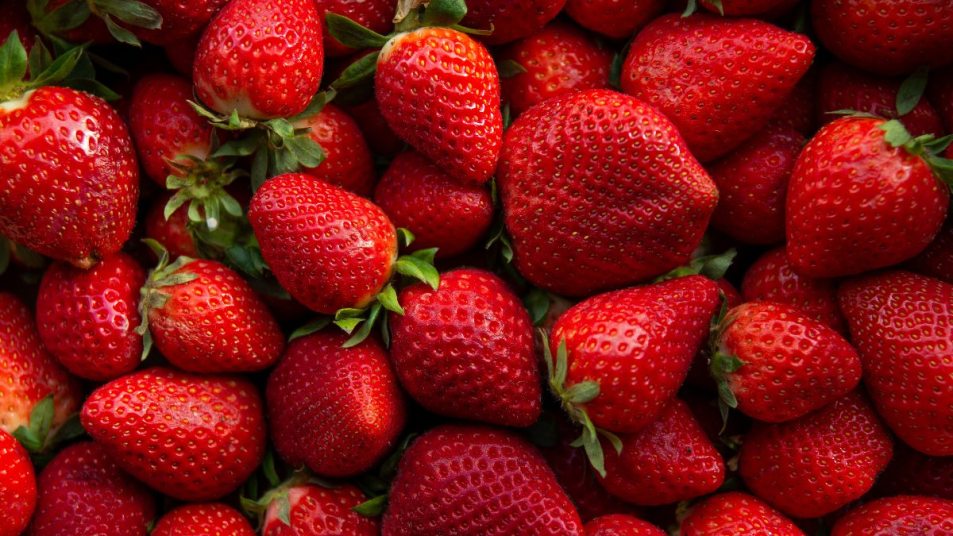Love Strawberries? Clean This Year’s Crop With Vinegar Before Consuming Them

It’s berry season! From fruit salads to freshly baked pies, it’s hard to say no to berries — especially when they’re at their peak in terms of flavor, ripeness, and availability. One berry, however, is getting a bad rap this year: the strawberry. The Environmental Working Group (EWG) named strawberries as number one in the Dirty Dozen, meaning they often contain the most pesticides out of every other fruit or vegetable.
What is the dirty dozen?
Officially called the EWG’s Shoppers Guide to Pesticides in Produce, the Dirty Dozen is part of a list that ranks pesticide contamination in 46 popular fruits and veggies. The Department of Agriculture and the FDA test about 45,000 samples of produce each year, and the results of those tests are used to rank produce from the most to the least contaminated.
The top 12 fruits and veggies that contain the most pesticides include:
- Strawberries
- Spinach
- Kale, collard, and mustard greens
- Nectarines
- Apples
- Grapes
- Bell and hot peppers
- Cherries
- Peaches
- Pears
- Celery
- Tomatoes
The list continues (potatoes and blueberries are numbers 13 and 14, respectively), but the first 12 are the produce about which we should be the most concerned.
Why are strawberries at the top of the list? Since they have no strong skin or outer peel, grow on the ground, and are extremely vulnerable to pests, they get sprayed with significant amounts of pesticides. And that lack of tough skin makes it easy for pesticides to seep into the fruit.
Why should we worry about pesticides?
As the EWG notes, pesticides are toxic by design. They kill bugs and organisms that harm our plants, but they harm us as well when we ingest them. A large body of research links pesticides to:
- Gastrointestinal, neurological, and respiratory issues.
- Infertility and reproductive harm (including birth defects, stillbirth, and spontaneous abortion).
- Several types of cancer, including leukemia, lymphoma, and cancer of the brain, breast, prostate, testes, and ovaries.
We also consume pesticides through our meat when the cows, pigs, and other animals we eat consume pesticide-ridden produce.
Will cleaning your strawberries do the trick?
Unfortunately, the solution isn’t as simple as washing your fruits and veggies. The EWG notes that the USDA washes, scrubs, and peels produce before testing for pesticide levels.
That means that we should turn to organic produce if we want to enjoy these berries without concern — but organic fruits are costly. When the organic versions of the Dirty Dozen are too expensive, the EWG often recommends that we buy more of the Clean Fifteen, which includes (in order of most pesticides to least):
- Sweet potatoes
- Watermelon
- Mangoes
- Cantaloupe
- Mushrooms
- Cabbage
- Kiwi
- Honeydew melon
- Asparagus
- Sweet peas (frozen)
- Papaya
- Onions
- Pineapple
- Sweet corn
- Avocados
Almost 70 percent of the Clean Fifteen samples in this year’s testing had no detectable pesticides, which is a big win! Stock up on delicious fruits like watermelon, mangoes, and kiwi, and you’ll satisfy that craving for tropical sweets.
Can I still eat strawberries if I clean them well?
If you simply can’t avoid strawberries for the remainder of the season, we don’t blame you! You can still eat them, but perhaps try to eat fewer of them. And buy organic when the price is right.
Also, follow this guide for cleaning strawberries with vinegar — regardless of whether they’re organic or not! It won’t eliminate all potential toxins, but it’s better than soaking the berries in plain water. A little extra effort goes a long way in terms of your health.
Update (6/1/22): Some sources, including the Alliance for Food and Farming (AFF), contest the information provided by the EWG and claim that the “Dirty Dozen” list is scientifically unsupportable. For more information from the AFF, visit SafeFruitsandVeggies.com.












